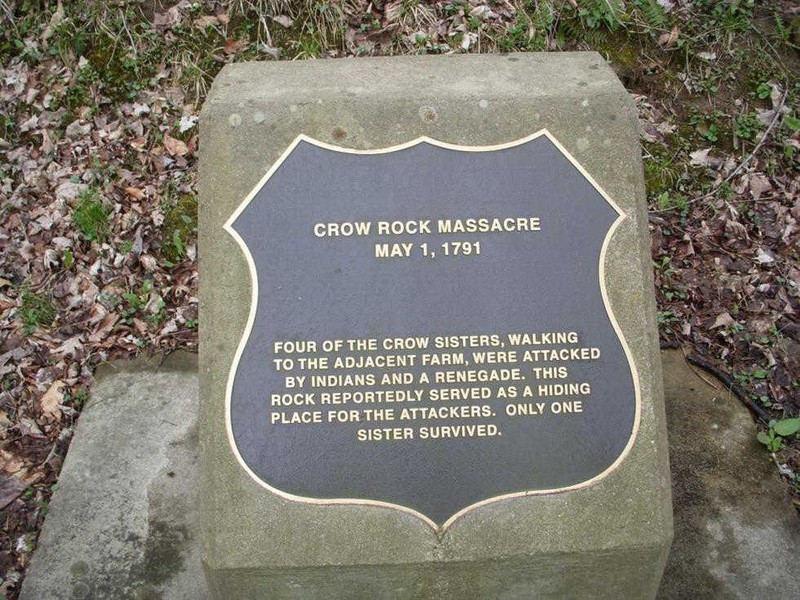Massacre of the Crow Sisters at Crow's Rock
Introduction
Text-to-speech Audio
Images

Backstory and Context
Text-to-speech Audio
The Crow family lived on 600 acres of land in Northern Greene County. The land was originally bought and owned by Jacob Crow. Jacob Crow came to the United States from Germany in 1765. Once in America, he was sold to repay his debt which he acquired on the journey. After his freedom, he found his way to Greene County and built the family homestead. He married and had eleven children: four boys and seven girls. Three of the sons were attacked by Indians in Wetzel County, West Virginia while on a hunting trip. Two of the brothers were severely injured and one passed away. Two years after the terrifying attack on the brothers, four of the sisters were attacked much closer to home.
Susie, Betsy, Tena, and Catharine Crow began their journey back home from a sickly neighbor’s home on Sunday, May 1st, 1791. About a mile and a half from their home, the group stopped to relax in the stream before crossing it to continue home. One of their brothers joined them as he was also heading home after finding one of the family’s loose horses. As he was going to leave, he asked the youngest sister to ride home with him, but she did not want to. Instead of fighting with her, he went on his way leaving them all behind.
Soon after their brother left, the girls were run down and attacked by two Indians and a white man named Spicer, who were hiding behind a large rock that was nearby. Spicer and his family were attacked by Indians in Dunkard Township on June 5, 1774. His parents were killed, but he and his sister were spared. Spicer went on to take on the Native American way of life and helped plan and commit brutal attacks on many settlers in the region.
Spicer and one of the Indians took the girls to a nearby tree, while the second Indian went after the brother. The girls were questioned about settlements in the area along with details about a local fort. The second Indian returned sometime later with no sign of the brother. After his return, each of the Indians took two of the girls. Betsy and Tena were taken by one of the Indians, and as he struck Betsy with his tomahawk, Tena was able to slip away. As she was running from the men, her attacker ran after her and hit her in the back with the butt of his gun. She fell, but he went back to the other sister to kill her first. After laying on the ground, realizing she was not being attacked, Tena got up and ran the rest of the way back to her home.
The next day the family, along with some others, went back to the site of the attack. There they found two of the sisters dead, and the third sister was barely alive. She was taken home, and a doctor from Wheeling, West Virginia was called to treat her. Once the doctor arrived, it was quickly determined she would not live, as she was missing a part of her skull and her brain was open to the air. She passed away three days after the barbaric attack.
All three sisters were buried together in their family’s burial plot, not extremely far from the original place of attack.
Sources
Getty, Rev. R. Frank . The Recalling of an Indian Tragedy, Presbyterian Banner . November 12th 1906. Accessed February 22nd 2021. http://cornerstonegenealogy.com/recalling_of_an_indian_trage.htm.
White Yeager, Thelma. Massacre of the Crow Sisters, PA-Roots. December 31st 2005. Accessed February 22nd 2021. http://www.pa-roots.org/data/read.php?411,309032.
